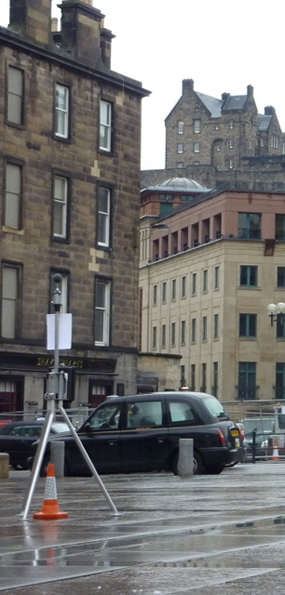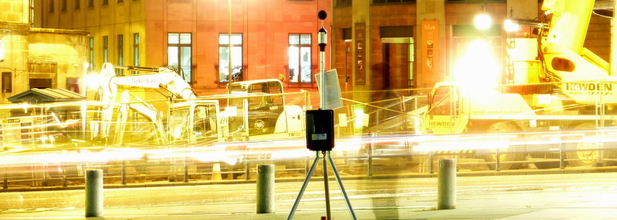 Perceptions in Edinburgh
Perceptions in Edinburgh
DREAMSys has recently been used in a demonstrative study with the University of Salford, funded by the Noisefutures network, aimed at assessing the difference between how noise is measured and perceived in urban environments.

The study has been conducted in Festival Square in Edinburgh (located between Usher Hall and the Sheraton hotel), during the Euronoise conference, which had gathered the most important researchers in acoustics from across Europe. The square was 'mined' with Dreamsys units, the MEMS microphones-based noise meters designed at NPL, which were making their debut public appearance. The units were used to produce real-time dB-based numbers and noise maps according to the European Noise Directive.
Perception was simultaneously determined by soundwalks: each participant to the study (e.g. fellow researchers, passers-by, people from the local Council) was guided along a determined path in the square, stopping in specific places to listen, and compiled at the end a questionnaire to assess perception on scales like 'vibrancy' or 'pleasantness'. This technique allowed the production of two maps, for an easy and practical visual comparison of the two approaches.
 The study demonstrated the limits of classical dB-based noise levels, still measured in ways pioneered at NPL in 1960s and currently used as a standard to assess exposure, as the iso-perception and the iso-energetic curves were strikingly different. Questionnaires identified how the expectations of the end-user may play a determinant role in the perception of an urban open area, but showed their limits in terms of standardisation. These results, soon available on the Noisefutures website, fostered the discussion at Euronoise on the need for new, perception-based indicators to design more welcoming cities and innovative actions to cope with environmental noise, more cost-effective in terms of improving the well being of residents.
The study demonstrated the limits of classical dB-based noise levels, still measured in ways pioneered at NPL in 1960s and currently used as a standard to assess exposure, as the iso-perception and the iso-energetic curves were strikingly different. Questionnaires identified how the expectations of the end-user may play a determinant role in the perception of an urban open area, but showed their limits in terms of standardisation. These results, soon available on the Noisefutures website, fostered the discussion at Euronoise on the need for new, perception-based indicators to design more welcoming cities and innovative actions to cope with environmental noise, more cost-effective in terms of improving the well being of residents.
Questionnaires were designed and distributed by Dr Bill Davies and Neil Bruce, from the Positive Soundscapes project.
DREAMSys units also attracted a lot of interest, in a context where noise measurements are getting more and more expensive (and thus rarely practiced).